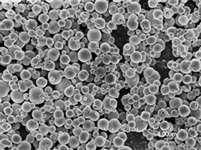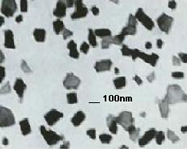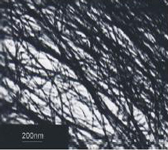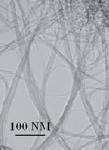

|
 |
|
| ||||||||||||||||||||||||||||||||||||||||
       |
|
Material Safety Data Sheet Date Revised: 10/5/2010 1. PRODUCT AND COMPANY IDENTIFICATION Product name : Rare Earth Doped Yttrium Vanadate --- Colloid Product Number : YVE1101, YVS1101, YVD1101, YVT1101 Company : Sun Innovations Technical Phone: 510-651-1329 Fax: 510-651-1321 Emergency Phone: 650-773-2483 2. COMPOSITION/INFORMATION ON INGREDIENTS Synonyms : Yttrium vanadium oxide Vanadium yttrium oxide Formula : O4VY Molecular Weight : 203.84
g/mol CAS-No. EC-No.
. 13566-12-6 236-965-1 Synonyms : PVP Polyvinylpyrrolidone Formula : (C6H9NO)x Molecular Weight : average
mol wt 40,000 g/mol CAS-No. EC-No.
. 9003-39-8 N/A Synonyms : Water Water Formula : H2O Molecular Weight : 18/mol CAS-No. 7732-18-5 3. HAZARDS IDENTIFICATION Emergency Overview OSHA
Hazards No known
OSHA hazards HMIS Classification Health
Hazard: 0 Flammability: 0 Physical
hazards: 0 NFPA
Rating Health
Hazard: 0 Fire: 0 Reactivity
Hazard: 0 Potential Health Effects Inhalation
May be harmful if inhaled. May cause respiratory tract irritation. Skin May be harmful if absorbed through skin. May cause skin irritation. Eyes May cause eye irritation. Ingestion
May be harmful if swallowed. 4. FIRST AID MEASURES If
inhaled If
breathed in, move person into fresh air. If not breathing give artificial
respiration In case
of skin contact Wash off
with soap and plenty of water. In case
of eye contact Flush
eyes with water as a precaution. If
swallowed Never
give anything by mouth to an unconscious person. Rinse mouth with water. 5. FIRE-FIGHTING MEASURES Flammable
properties Flash
point: not applicable Ignition
temperature: no data available Suitable
extinguishing media Use
extinguishing measures that are appropriate to local circumstances and the
surrounding environment. Special
protective equipment for fire-fighters Wear self
contained breathing apparatus for fire fighting if necessary. Further
information The
product itself does not burn. 6. ACCIDENTAL RELEASE MEASURES Personal
precautions Avoid
dust formation. Environmental
precautions Do not
let product enter drains. Methods
for cleaning up Sweep up
and shovel. Keep in suitable, closed containers for disposal. 7. HANDLING AND STORAGE Handling Provide
appropriate exhaust ventilation at places where dust is formed. Storage Keep
container tightly closed in a dry and well-ventilated place. 8. EXPOSURE CONTROLS/PERSONAL PROTECTION Components
with workplace control parameters
Personal
protective equipment Respiratory
protection Respiratory
protection is not required. Where protection from nuisance levels of dusts are
desired, use type N95 (US) or type P1 (EN 143) dust masks. Use respirators and
components tested and approved under appropriate government standards such as
NIOSH (US) or CEN (EU). Hand
protection For prolonged or repeated contact use protective gloves. Eye
protection Safety
glasses Hygiene
measures General industrial hygiene practice. 9. PHYSICAL AND CHEMICAL PROPERTIES Appearance Liquid
dispersion Safety
data pH 7 Melting
point, not applicable Boiling
point, 100 oC Flash
point, not applicable Ignition
temperature, no data available Lower
explosion limit, no data available Upper
explosion limit, no data available Density 1
g/mL at 25 degreesC (77 degreesF) 10. STABILITY AND REACTIVITY Storage
stability Stable under recommended storage conditions. Materials
to avoid Strong
oxidizing agents Hazardous
decomposition products Hazardous
decomposition products formed under fire conditions. - Nature of decomposition
products not known. 11. TOXICOLOGICAL INFORMATION Acute
toxicity no data
available Irritation
and corrosion no data
available Sensitisation no data
available Chronic
exposure IARC: No component of this product present at levels greater than or
equal to 0.1% is identified as probable, possible or confirmed human carcinogen
by IARC. ACGIH: No
component of this product present at levels greater
than or equal to 0.1% is identified as a carcinogen or potential carcinogen by
ACGIH. NTP: No component of this product present at levels greater than or
equal to 0.1% is identified as a known or anticipated carcinogen by NTP. OSHA: No component of this product present at levels greater than or
equal to 0.1% is identified as a carcinogen or potential carcinogen by OSHA. Potential
Health Effects Inhalation
May be harmful if inhaled. May cause respiratory tract irritation. Skin May be harmful if absorbed through skin. May cause skin irritation. Eyes May cause eye irritation. Ingestion
May be harmful if swallowed. 12. ECOLOGICAL INFORMATION Elimination
information (persistence and degradability) no data
available Ecotoxicity effects no data
available Further
information on ecology no data
available 13. DISPOSAL CONSIDERATIONS Product Observe
all federal, state, and local environmental regulations. Contaminated
packaging Dispose
of as unused product. 14. TRANSPORT INFORMATION DOT (US) Not
dangerous goods IMDG Not
dangerous goods IATA Not
dangerous goods 15. REGULATORY INFORMATION OSHA
Hazards No known
OSHA hazards TSCA
Status On TSCA
Inventory DSL
Status This
product contains the following components listed on the Canadian NDSL list. All
other components are on the Canadian DSL list. Vanadium yttrium tetraoxide, CAS-No. 13566-12-6 SARA 302
Components SARA 302:
No chemicals in this material are subject to the reporting requirements of SARA
Title III, Section 302. SARA 313
Components SARA 313:
This material does not contain any chemical components with known CAS numbers
that exceed the threshold (De Minimis) reporting
levels established by SARA Title III, Section 313. SARA
311/312 Hazards No SARA
Hazards No
Components Listed Vanadium yttrium tetraoxide, CAS-No. 13566-12-6 Vanadium yttrium tetraoxide, CAS-No. 13566-12-6 This
product does not contain any chemicals known to State of 16. OTHER INFORMATION Further information Employers should use this information only as a supplement to other information gathered by them, and should make independent judgment of suitability of this information to ensure proper use and protect the health and safety of employees.This information is furnished without warranty, and any use of the product not in conformance with this Material Safety Data Sheet, or in combination with any other product or process, is the responsibility of the user. . |
|
SUN INNOVATIONS, INC. 43241 OSGOOD ROAD, FREMONT CA USA 94539 PHONE: +1 (510) 651-1329 FAX: +1 (510) 651-1321 EMAIL: SALES@NANOMATERIALSTORE.COM | ||
| Copyright © 2005-2020, Sun Innovations, Inc. All rights reserved. | ||
| SITE MAP: HOME COMPANY CONTACT SHOPPING CART TERMS |
| CARBON NANOTUBE PRODUCTS: ALIGNED MWNT DWNT SWNT HIGH PURITY MWNT COOH FUNCTIONALIZED MWNT INDUSTRIAL MWNT MWNT DISPERSIONS OH FUNCTIONALIZED MWNT SHORT MWNT |
| NANO-METALS: NANO-ALUMINUM NANO-COBALT NANO-COPPER NANO-IRON NANO-NICKEL NANO-SILICON NANO-SILVER |
| OTHER NANOPARTICLES: NANO-CARBIDES COLLOIDS NANO-NITRIDES NANO-OXIDES PHOSPHORDOTSTM NANO-PHOSPHOR NANO-TITANIUM NANO-ZINC |




